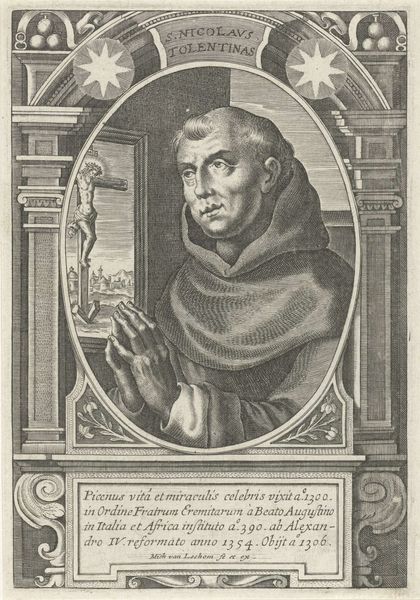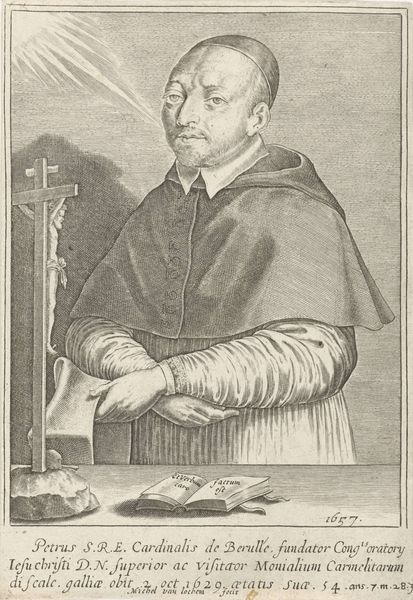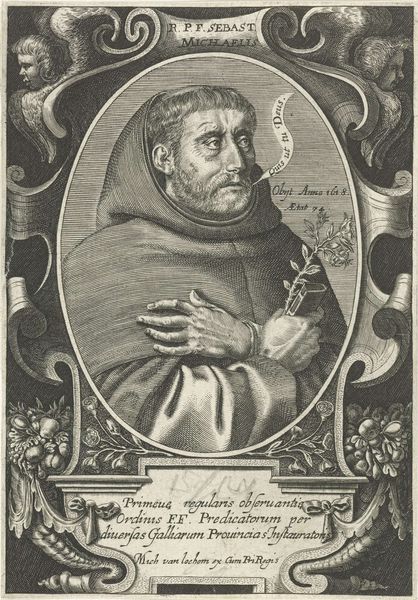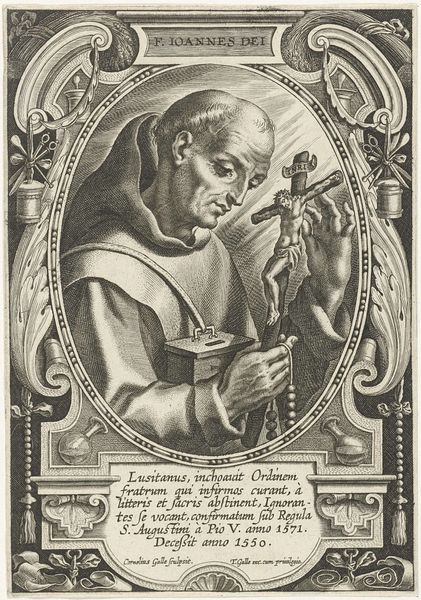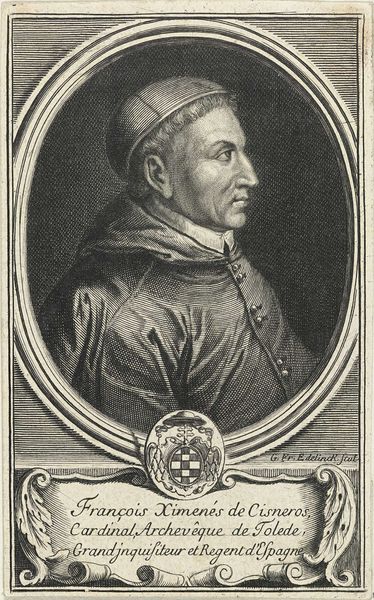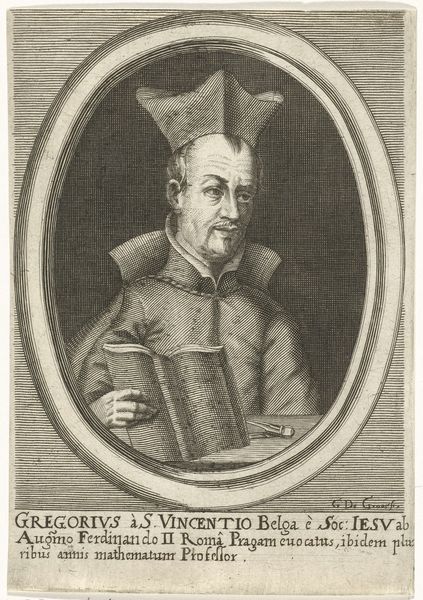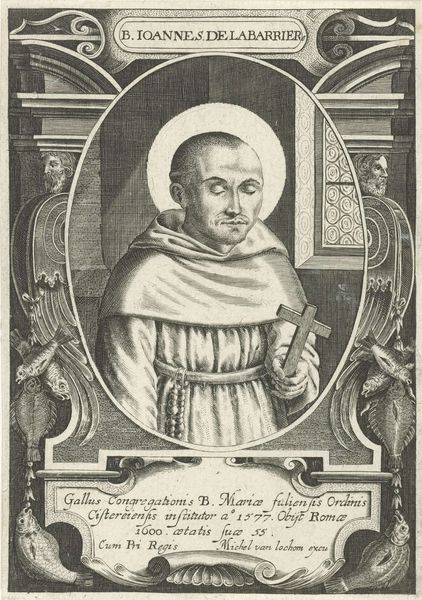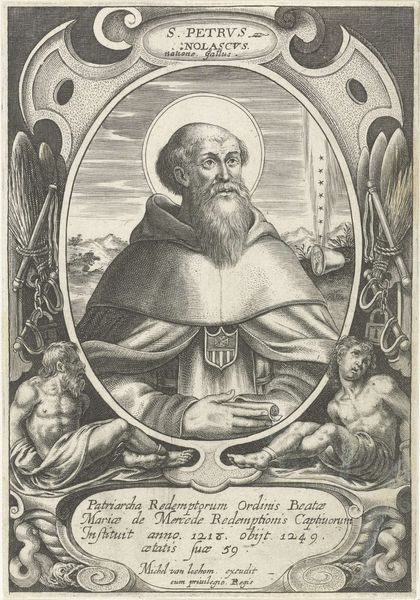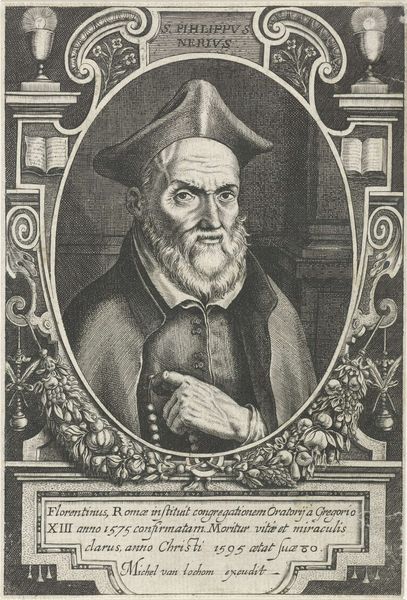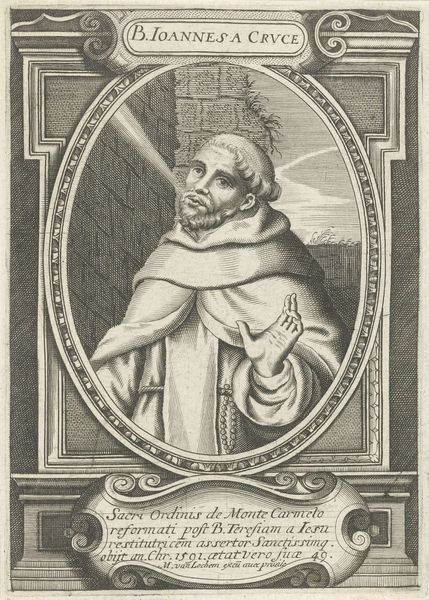
print, engraving
#
portrait
#
medieval
#
baroque
# print
#
engraving
Dimensions: height 149 mm, width 104 mm
Copyright: Rijks Museum: Open Domain
This is Michel van Lochom's engraving of Saint Cyriacus. Note the bowl of coins that he holds, a reference to the legend that Cyriacus discovered hidden treasure, which he used to aid the poor. Here the coins symbolize not merely wealth but rather an act of divine providence and charitable duty. Consider the cross emblazoned on his habit, echoed by smaller crosses in the frame. The cross has origins in early Christianity. It is used to represent salvation, atonement, hope, and faith in Jesus Christ, evolving through the ages from a symbol of death to one of triumphant resurrection. One can find the cross adorned with jewels in Byzantine mosaics, or rendered as a simple wooden structure in early medieval art, each iteration carrying the weight of its historical moment. These symbols are more than mere images; they are conduits through which the collective unconscious of humanity is expressed, where personal and collective memory converge. The cross and the coins engage viewers on a deep subconscious level, evoking feelings tied to sacrifice, redemption, and the eternal quest for meaning. It is a symbol that has resurfaced, evolved, and taken on new meanings across different historical contexts.
Comments
No comments
Be the first to comment and join the conversation on the ultimate creative platform.
